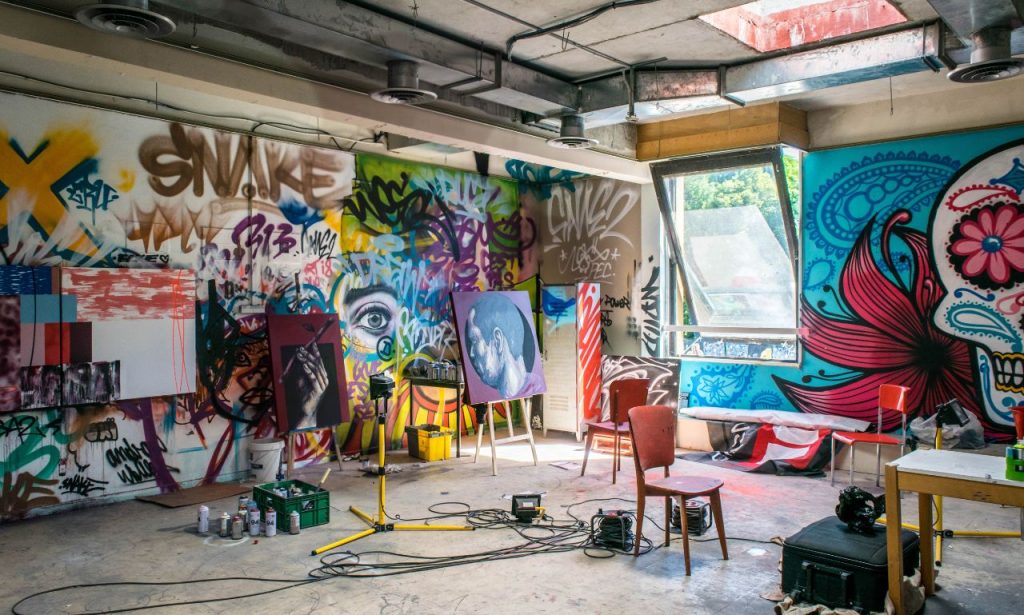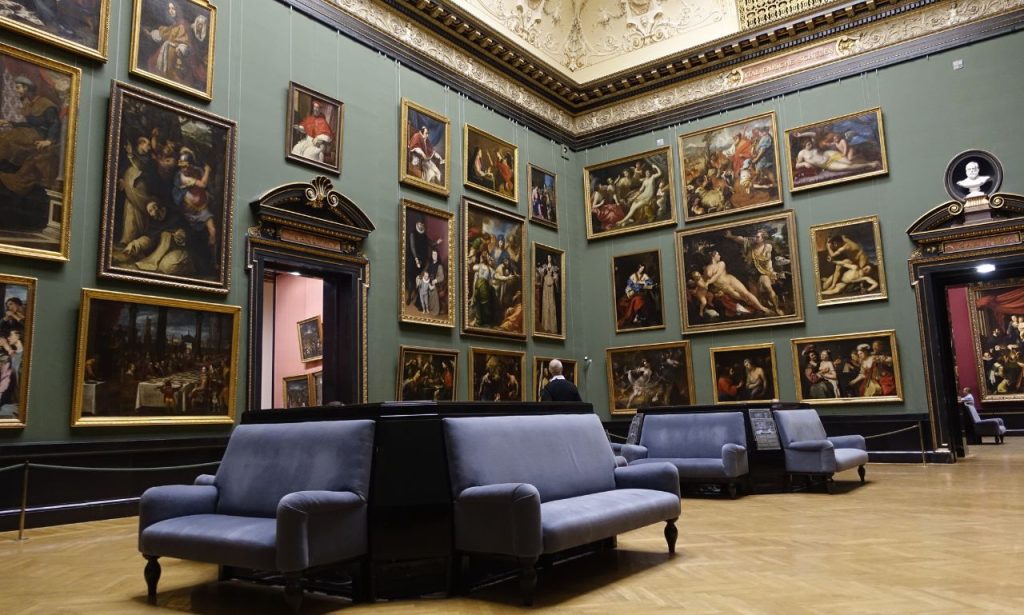Opening an art gallery can be an exciting and rewarding venture. It offers the opportunity to bring art to a wider audience, support artists, and create a space where art lovers can gather and experience new pieces. However, it requires careful planning, a good understanding of the art market, and a well-executed business strategy. In this guide, we’ll walk you through the essential steps to open a successful art gallery, from choosing the right space to understanding the costs involved.
Find the Right Space for Your Art Gallery
Potential buyers and foot traffic are drawn to prime locations. They center the art scene around you. However, they also have high rent, which can reduce your earnings. In Chelsea, New York, a 500-square-foot gallery could cost up to $10,000 per month. That does not include staff, insurance, or utility costs.
When you first start out, think about alternatives like shared spaces or pop-up galleries. You can experiment with these options without getting bogged down in overhead expenses. Before committing to permanent spaces, many prosperous gallery owners started with temporary exhibitions.
The kind of art you intend to display should blend in with your physical space. Large sculptures look better with high ceilings. Paintings look better in natural lighting. Visitors should be led through a journey rather than a maze by the layout.
Consult the Basics of the Business

Starting an art gallery means running a business first and appreciating art second. You need a solid business plan that outlines your goals, target market, and financial projections.
Form relationships with a business lawyer and accountant familiar with the art industry. They’ll help navigate the complex legal and financial landscape of the art world. Legal structures matter – will you operate as an LLC, sole proprietorship, or corporation? Each has different tax implications and liability protections.
Your business plan should answer basic questions: Who’s your target audience? What price point will you focus on? How will you source artwork? What percentage will you take from sales? Most galleries operate on a 50/50 split with artists, but this varies by market and reputation.
Setting up an all-in-one business platform for inventory management, sales tracking, and customer relationships will save countless headaches down the road. Systems like Coe Gallery offer specialized tools for art gallery management, handling everything from artwork tracking to sales processing.
Know Your Competitors
The art market is competitive, although it appears cooperative. Successful art galleries understand their position in the market.
Visit local galleries regularly. Visit their evening receptions. See what they’re exhibiting and how. This will help you find holes you can fill and give insightful information about the local art world.
Are current galleries neglecting the next generation to favor established artists? Is there a style or a medium that is under-represented? Perhaps there isn’t any specific area for contemporary photography in your city.
Competitive analysis is not about copying people. It’s about finding your own twist. Instituto de Visión in Bogotá gained international recognition by focusing exclusively on overlooked Latin American artists from the 1970s and 80s – a niche other galleries had ignored.
Online galleries have transformed the competitive landscape. Research how digital platforms like Artsy or Saatchi Art operate. They reach broader audiences but charge significant commissions. Understanding this digital competition helps position your physical gallery effectively.
Take Risks
Playing it safe rarely leads to standout success in the art world. Galleries that make an impact often challenge conventions.
Consider unconventional spaces or presentation methods. One gallery owner I know converted an old gas station into an exhibition space. The unusual setting became part of the appeal, attracting press coverage and curious visitors who became loyal patrons.
Take risks with the artists you represent. Finding that brilliant but undiscovered talent before other galleries requires courage and conviction. Your reputation as a gallery owner who can spot the next big thing attracts both artists and collectors.
Programming risks can pay off, too. Themed exhibitions that connect artwork through unifying themes rather than similar styles can create compelling narratives. Mixing established artists with emerging ones in group shows builds beneficial relationships for everyone involved.
Smart risks are calculated ones. They push boundaries while maintaining your gallery’s core identity and financial stability. The most successful gallery owners know when to play it safe and when to make bold moves.
Invest in Marketing
Develop a strong digital presence through your website and social media platforms. Use high-quality images of your art and space. Share stories about your artists, not just their work. Behind-the-scenes content creates connections and builds anticipation for upcoming events.
One of the best strategies for galleries is still email marketing. Create a subscriber list of collectors and art lovers. Provide frequent updates on artist talks, exhibition openings, and new acquisitions. Engagement rates are raised by using customised email message templates for various audience segments.
Physical marketing is still important. Create unique invitations for your upcoming events. Make take-home gallery guides for guests. Participate in local art walks to introduce new audiences to your space.
Consider participating in art fairs. While booth fees and shipping costs can be substantial, these events put your gallery in front of serious collectors and provide networking opportunities with other industry professionals.
Remember that your best marketing often happens through word of mouth. Satisfied clients who feel they’ve discovered something special will bring friends and fellow collectors.
Mitigate Legal Challenges
The art world presents unique legal considerations that require attention from day one. Contracts with artists should clearly outline commission structures, exclusivity agreements, and responsibilities for both parties. These agreements protect everyone involved and prevent misunderstandings that could damage relationships.
Insurance for both the physical space and the artwork is non-negotiable. A single water leak or fire could destroy millions in artwork. Gallery insurance typically covers property damage, liability, and specialized art coverage.
Intellectual property issues arise frequently in galleries. Understand copyright laws and how they apply to exhibitions, catalogs, and online promotion of artwork. Get proper permission to use images of artwork in your marketing materials.
International sales introduce additional complexities with customs, taxes, and shipping regulations. Working with experienced art shipping companies can help one navigate these challenges.
Leveraging Technology for Gallery Management

Technology has revolutionized the way galleries operate behind the scenes and interact with customers. Implement a sophisticated cloud-based inventory system to handle artwork, artist information, and sales history. Software like ArtCloud and ArtBase offers gallery-specific functionality such as condition reporting and location tracking. Online gallery tours take your reach out of physical boundaries. They allow would-be buyers to see your space anywhere on the globe. Reality technology provides immersive experiences that may emphasize details and dimensions lost in photos.
Some forward-thinking galleries have begun exploring blockchain technology for provenance tracking and digital certificates of authenticity. This provides collectors with secure, permanent records of ownership history.
Customer relationship management (CRM) systems help track interactions with collectors, remember their preferences, and identify opportunities for future sales. The personal touch remains essential, but technology ensures that nothing falls through the cracks.
Sales tools that process transactions smoothly, generate professional invoices, and provide insight into payments make the business side of the art more manageable. The easier you make it for someone to purchase, the more likely they are to complete the sale.
Curate a Unique Collection
Establish precise standards for choosing artists and pieces. Are you concentrating on particular forms of art, themes, or media? It is not necessary to display the same work in order to have a cohesive vision. It entails fostering dialogues between pieces that improve both the individual pieces and the experience as a whole.
The success of your gallery is fuelled by cultivating strong relationships with artists. The best relationship between an artist and a gallery is partnership. Encourage their sales and artistic growth. This can include supporting experimentation or facilitating grants and residencies.
Balance both veteran and up-and-coming artists within your program. While well-established brands offer stability and attract serious collectors, up-and-coming artists bring energy and new ideas.
This combination creates an energetic environment that keeps your gallery up-to-date.
Keep in mind that curation goes beyond selection to presentation. How art is laid out, lighted, and contextualized significantly affects the viewer experience. The space between pieces matters as much as the art itself.
Do artists make money from galleries?
Artists typically earn 50% of the sale price when working with galleries. This split compensates the gallery for marketing, space, client relationships, and sales expertise. Some galleries offer less favorable terms for emerging artists or better ones for established names.
The gallery system provides artists with more than just sales revenue. It offers legitimacy, exposure to curators and collectors, and professional representation. Many artists find this ecosystem essential for building sustainable careers.
Commercial galleries create opportunities beyond direct sales. They connect artists with private commissions, public art projects, and institutional acquisitions. These additional pieces often become significant sources of revenue for artists.
How Much Does it Cost to Open an Art Gallery?

Startup costs vary dramatically depending on location, size, and ambition. A modest gallery in a secondary market might require $50,000-$100,000 to launch. In prime art centers like New York or London, initial investments often exceed $200,000.
The biggest expenses include:
- Lease deposits and renovation costs (typically $20,000-$60,000).
- Opening inventory acquisition ($10,000-$50,000).
- Insurance policies ($5,000-$15,000 annually).
- Gallery management software ($1,200-$5,000 annually).
- Marketing and opening events ($10,000-$25,000).
- Legal setup and contracts ($5,000-$10,000).
Conclusion
Opening an art gallery is half business acumen and half art passion. It needs planning, market knowledge, and genuine relationships with artists and collectors to succeed. The most successful galleries are the ones that create spaces where art is new and alive and where new connections are formed. The road may not be easy, but to those committed to working for artists and making good art available to more people, few businesses offer the same personal satisfaction. With planning and diligence, your gallery can be a business and an artistic treasure in your community.
ALSO READ: What to Expect From Your Realtor When Selling
FAQs
Most galleries operate on a 50/50 split with artists, though this can range from 30% to 60%, depending on the gallery’s reputation and the services provided.
Online galleries reach broader audiences with lower overhead costs but miss the experiential aspects of physical spaces that often drive sales of higher-priced artwork.
Specialization helps establish a clear identity and expertise, while variety appeals to broader audiences. Most successful galleries find a balance with a focused approach that allows for some diversity.
How important are opening receptions for galleries? Crucial. They create social events around your exhibitions, generate sales momentum, and build community around your gallery program.
Research comparable artists and works in your market, consider the artist’s exhibition history and career stage, and ensure prices allow room for value growth without pricing out potential collectors.



